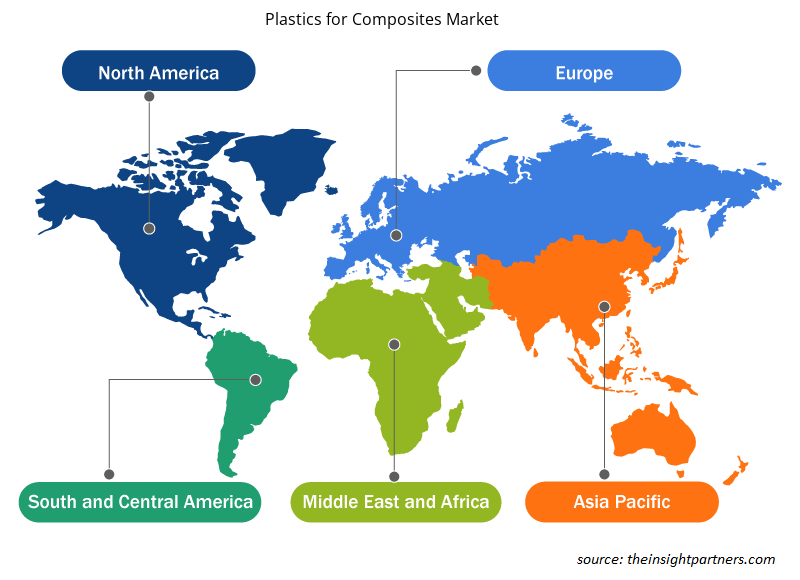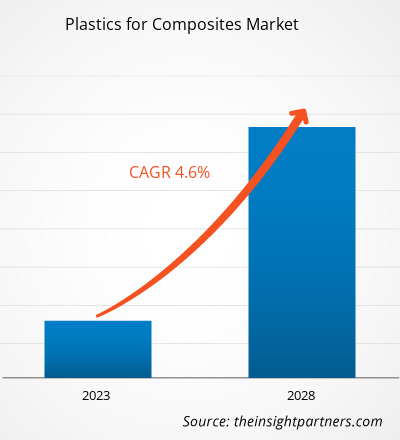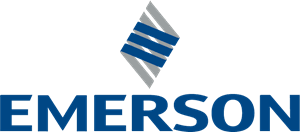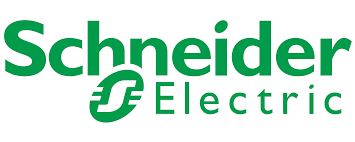من المتوقع أن ينمو سوق البلاستيك للمركبات من 23،337.24 مليون دولار أمريكي في عام 2022 إلى 30،490.85 مليون دولار أمريكي بحلول عام 2028؛ ومن المتوقع أن يسجل معدل نمو سنوي مركب بنسبة 4.6٪ من عام 2022 إلى عام 2028.
المركبات هي مواد تتكون من طورين أو أكثر مختلفين كيميائيًا وفيزيائيًا يفصل بينهما سطح مميز. تستخدم معظم المركبات المنتجة تجاريًا مادة مصفوفة بوليمرية، غالبًا ما تسمى محلول راتنج. تشمل مصفوفات البوليمر المستخدمة بشكل شائع البوليستر وإستر الفينيل والإيبوكسي والفينول والبولي إيميد والبولي أميد والبولي بروبيلين وبولي إيثر إيثر كيتون (PEEK). التكلفة المنخفضة وسهولة المعالجة والمقاومة الكيميائية الجيدة والجاذبية النوعية المنخفضة من بين المزايا الرئيسية المرتبطة بمصفوفات البوليمر.
يساهم الاستخدام المتزايد للراتنجات المركبة في أنشطة البناء والتشييد والتطبيقات الجوية والعسكرية في نمو سوق البلاستيك للمركبات . بالإضافة إلى ذلك، فإن الطلب على المواد خفيفة الوزن في تصنيع المركبات، لتحسين كفاءة الوقود، هو عامل آخر يدفع توسع السوق. علاوة على ذلك، يساهم الطلب المتزايد على الراتنجات البلاستيكية الحرارية بشكل كبير في نمو سوق البلاستيك للمركبات بشكل عام. الألياف الصلبة ومقاومة الحرارة العالية ومقاومة التشقق ومقاومة الصدمات العالية ومصفوفة البوليمر القوية هي الخصائص الرئيسية للمركبات البوليمرية التي تدفع شعبيتها. من المرجح أن تؤدي الاستثمارات المتزايدة في توليد الطاقة المتجددة إلى تحفيز الطلب على المركبات البوليمرية على مدى السنوات القادمة.
قم بتخصيص هذا التقرير ليناسب متطلباتك
ستحصل على تخصيص لأي تقرير - مجانًا - بما في ذلك أجزاء من هذا التقرير، أو تحليل على مستوى الدولة، وحزمة بيانات Excel، بالإضافة إلى الاستفادة من العروض والخصومات الرائعة للشركات الناشئة والجامعات
- احصل على أهم اتجاهات السوق الرئيسية لهذا التقرير.ستتضمن هذه العينة المجانية تحليلاً للبيانات، بدءًا من اتجاهات السوق وحتى التقديرات والتوقعات.
رؤى السوق
الطلب المتزايد من صناعات السيارات والطيران يدفع سوق البلاستيك للمركبات إلى النمو
تُستخدم الراتينجات المركبة في تطبيقات مختلفة، بما في ذلك البناء والبنية الأساسية، والنقل، والكهرباء والإلكترونيات، وطاقة الرياح، وخطوط الأنابيب والخزانات، والبحرية، والفضاء والجيش. تُعَد المواد المتقدمة أمرًا بالغ الأهمية لتعزيز الاقتصاد في استهلاك الوقود في السيارات الحديثة مع ضمان السلامة والأداء. نظرًا لأن تسريع الأشياء الأخف وزناً يتطلب طاقة أقل من الأشياء الأثقل وزنًا، فإن المواد خفيفة الوزن توفر إمكانات ممتازة لزيادة كفاءة المركبات. لذلك، فإن الطلب المرتفع على المواد المركبة من صناعة السيارات لتصنيع المركبات الخفيفة الوزن الموفرة للوقود يدفع نمو سوق البلاستيك للمركبات. تُعَد الصناعات النهائية في الاقتصادات الناشئة، مثل الصين والهند، من المساهمين الرئيسيين في الطلب المتزايد على البلاستيك للمركبات. كانت الحاجة المتزايدة إلى مواد أخف وزنًا لبناء مكونات وأجزاء الطيران عاملاً مهمًا آخر يساهم في نمو سوق البلاستيك للمركبات. تبذل شركات تصنيع الطائرات جهودًا لتوسيع الهياكل البلاستيكية الحرارية الأولية في الطائرات النفاثة التجارية والطائرات التجارية. لقد كانوا من أوائل من تبنوا البلاستيك الحراري المقوى بالألياف الطويلة.
رؤى النوع
بناءً على النوع، يتم تقسيم سوق البلاستيك للمركبات إلى مركبات صلبة بالحرارة (بوليستر، فينيل استر، إيبوكسي، بولي يوريثين، وغيرها) ومركبات بلاستيكية حرارية (بولي بروبيلين، بولي إيثيلين، بولي فينيل كلوريد، بوليسترين، بولي إيثيلين تيريفثالات، بولي كربونات، وغيرها). احتل قطاع المواد الصلبة بالحرارة حصة أكبر من السوق في عام 2021. تعتبر المواد الصلبة بالحرارة مادة شائعة لمصفوفة البوليمر للمركبات المقواة بالألياف. تشمل الأمثلة الشائعة للمواد الصلبة بالحرارة الإيبوكسي والبوليستر. وهي من بين الأنواع الرئيسية لأنظمة المصفوفة، المستخدمة على وجه التحديد في صناعة الطيران. تُستخدم مركبات المصفوفة بالحرارة على نطاق أوسع من مركبات المصفوفة بالحرارة البلاستيكية بسبب لزوجتها المنخفضة في درجات حرارة منخفضة نسبيًا (أقل من 100 درجة مئوية)، مما يسهل عملية ترطيب الراتينج/الألياف بشكل أفضل. ومن المتوقع أن تدفع هذه العوامل نمو سوق مكونات المصفوفة بالحرارة.
تعد Lanxess AG وCovestro AG وCelanese Corp وINEOS Group Holdings SA وDaisel Corp وBASF SE وEvonik Industries AG وSolvay SA وSaudi Basic Industries Corp وArkema SA من بين اللاعبين الرئيسيين العاملين في سوق البلاستيك للمركبات. يتبنى اللاعبون الرائدون استراتيجيات مثل عمليات الدمج والاستحواذ وإطلاق المنتجات لتوسيع حضورهم الجغرافي وقاعدة المستهلكين. على سبيل المثال، في يونيو 2022، أطلقت Lanxess AG مركبًا بمصفوفة بولي أميد 6 يعتمد على سيكلوهكسان "أخضر".
رؤى إقليمية حول سوق البلاستيك للمركبات
لقد قام المحللون في Insight Partners بشرح الاتجاهات والعوامل الإقليمية المؤثرة على سوق البلاستيك للمركبات طوال فترة التوقعات بشكل شامل. يناقش هذا القسم أيضًا قطاعات سوق البلاستيك للمركبات والجغرافيا في جميع أنحاء أمريكا الشمالية وأوروبا ومنطقة آسيا والمحيط الهادئ والشرق الأوسط وأفريقيا وأمريكا الجنوبية والوسطى.

- احصل على البيانات الإقليمية المحددة لسوق البلاستيك للمركبات
نطاق تقرير سوق البلاستيك للمركبات
| سمة التقرير | تفاصيل |
|---|---|
| حجم السوق في عام 2022 | 23.34 مليار دولار أمريكي |
| حجم السوق بحلول عام 2028 | 30.49 مليار دولار أمريكي |
| معدل النمو السنوي المركب العالمي (2022 - 2028) | 4.6% |
| البيانات التاريخية | 2020-2021 |
| فترة التنبؤ | 2023-2028 |
| القطاعات المغطاة | حسب النوع
|
| المناطق والدول المغطاة | أمريكا الشمالية
|
| قادة السوق وملفات تعريف الشركات الرئيسية |
|
كثافة اللاعبين في سوق البلاستيك للمركبات: فهم تأثيرها على ديناميكيات الأعمال
يشهد سوق البلاستيك للمركبات نموًا سريعًا، مدفوعًا بالطلب المتزايد من المستخدم النهائي بسبب عوامل مثل تفضيلات المستهلك المتطورة والتقدم التكنولوجي والوعي المتزايد بفوائد المنتج. ومع ارتفاع الطلب، تعمل الشركات على توسيع عروضها والابتكار لتلبية احتياجات المستهلكين والاستفادة من الاتجاهات الناشئة، مما يؤدي إلى زيادة نمو السوق.
تشير كثافة اللاعبين في السوق إلى توزيع الشركات أو المؤسسات العاملة في سوق أو صناعة معينة. وهي تشير إلى عدد المنافسين (اللاعبين في السوق) الموجودين في مساحة سوق معينة نسبة إلى حجمها أو قيمتها السوقية الإجمالية.
الشركات الرئيسية العاملة في سوق البلاستيك للمركبات هي:
- شركة لانكسيس ايه جي
- شركة كوفسترو
- شركة سيلانيز
- مجموعة إنيوس القابضة المحدودة
- شركة دايسل
إخلاء المسؤولية : الشركات المذكورة أعلاه ليست مرتبة بأي ترتيب معين.

- احصل على نظرة عامة على أهم اللاعبين الرئيسيين في سوق البلاستيك للمركبات
تقرير يسلط الضوء على
- الاتجاهات التقدمية في صناعة البلاستيك للمركبات لمساعدة اللاعبين على تطوير استراتيجيات فعالة طويلة الأجل
- استراتيجيات نمو الأعمال التي تتبناها الشركات لضمان النمو في الأسواق المتقدمة والنامية
- التحليل الكمي لسوق البلاستيك العالمي للمركبات من 2020 إلى 2028
- تقدير الطلب على البلاستيك للمركبات في مختلف الصناعات
- تحليل قوى بورتر الخمس لتوضيح فعالية المشترين والموردين العاملين في مجال البلاستيك لصناعة المركبات
- التطورات الأخيرة لفهم سيناريو السوق التنافسي والطلب على البلاستيك للمركبات
- اتجاهات السوق وتوقعاتها والعوامل التي تحكم نمو سوق البلاستيك للمركبات
- استراتيجيات تنويرية تدعم الاهتمام التجاري فيما يتعلق بنمو السوق، وتساعد في عملية صنع القرار
- حجم سوق البلاستيك للمركبات في مختلف مناطق السوق
- نظرة عامة مفصلة وتقسيم السوق، بالإضافة إلى ديناميكيات صناعته
- حجم سوق البلاستيك للمركبات في مناطق مختلفة مع فرص نمو واعدة
"تحليل سوق البلاستيك للمركبات حتى عام 2028" هو دراسة متخصصة ومتعمقة لصناعة المواد الكيميائية والمواد، مع التركيز على تحليل اتجاه سوق البلاستيك للمركبات. يهدف التقرير إلى تقديم نظرة عامة على السوق مع التجزئة التفصيلية. يتم تقسيم سوق البلاستيك للمركبات على أساس النوع والتكنولوجيا والجغرافيا. بناءً على النوع، يتم تقسيم السوق إلى مواد صلبة بالحرارة (بوليستر، فينيل إستر، إيبوكسي، بولي يوريثين، وغيرها) ومواد بلاستيكية حرارية (بولي بروبيلين، بولي إيثيلين، بولي فينيل كلوريد، بوليسترين، بولي إيثيلين تيريفثالات، بولي كربونات، وغيرها). بناءً على التكنولوجيا، يتم تقسيم السوق إلى قولبة بالحقن، وقولبة بالضغط، وسحب بالبثق، وضخ الراتينج، وغيرها. من حيث الجغرافيا، يتم تقسيم السوق إلى خمس مناطق رئيسية - أمريكا الشمالية، وأوروبا، وآسيا والمحيط الهادئ، والشرق الأوسط وأفريقيا، وأمريكا الجنوبية والوسطى. في عام 2021، هيمنت منطقة آسيا والمحيط الهادئ على سوق البلاستيك للمركبات. ومن المتوقع أن تسجل المنطقة أعلى معدل نمو سنوي مركب في السوق خلال فترة التوقعات. تنمو صناعات السيارات والبناء في منطقة آسيا والمحيط الهادئ بوتيرة سريعة. إنها المنطقة الأكثر اكتظاظًا بالسكان في العالم، وتستضيف المنطقة واحدة من أسرع صناعات البناء نموًا في العالم. تساهم هذه العوامل في ارتفاع الطلب على البلاستيك للمركبات في منطقة آسيا والمحيط الهادئ.
- التحليل التاريخي (سنتان)، سنة الأساس، التوقعات (7 سنوات) مع معدل النمو السنوي المركب
- تحليل PEST و SWOT
- حجم السوق والقيمة / الحجم - عالمي، إقليمي، بلد
- الصناعة والمنافسة
- مجموعة بيانات إكسل
التقارير الحديثة
تقارير ذات صلة
شهادات العملاء
سبب الشراء
- اتخاذ قرارات مدروسة
- فهم ديناميكيات السوق
- تحليل المنافسة
- رؤى العملاء
- توقعات السوق
- تخفيف المخاطر
- التخطيط الاستراتيجي
- مبررات الاستثمار
- تحديد الأسواق الناشئة
- تحسين استراتيجيات التسويق
- تعزيز الكفاءة التشغيلية
- مواكبة التوجهات التنظيمية





















 احصل على عينة مجانية ل - سوق البلاستيك للمركبات
احصل على عينة مجانية ل - سوق البلاستيك للمركبات